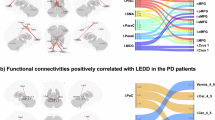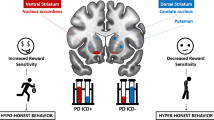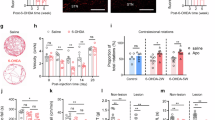Abstract
Although a high percentage of Parkinson's disease (PD) patients suffer from depression in addition to their motor disabilities, the etiology of this depression is unknown. Within the framework of the monoamine deficiency hypothesis of depression, we present a neuronal circuitry that accounts for depression in PD. Using behavioral and direct neuronal circuitry measurements we show that the habenula mediates the coupling between the dopaminergic and the serotonergic systems and argue that alterations in basal ganglia activity cause habenula hyperactivity that result with depression in PD. Behavioral results from novelty suppressed feeding and force swim tests, as well as direct circuitry measures with manganese enhanced MRI indicate (i) depressive-like behavior and reduced raphe nuclei connectivity/excitability in unilateral 6-hydroxydopamine injected rats, (ii) partial normalization of behavior and raphe connectivity after apomorphine treatment, and (iii) normalization of behavior after bilateral lesion of the habenula. These findings open up avenues for therapeutic intervention.
Similar content being viewed by others

Article PDF
Author information
Authors and Affiliations
Corresponding author
Rights and permissions
About this article
Cite this article
Sourani, D., Eitan, R. & Oelman, G. The Etiology of Depression in Parkinson's Disease. Nat Prec (2010). https://doi.org/10.1038/npre.2010.4804.1
Received:
Accepted:
Published:
DOI: https://doi.org/10.1038/npre.2010.4804.1


